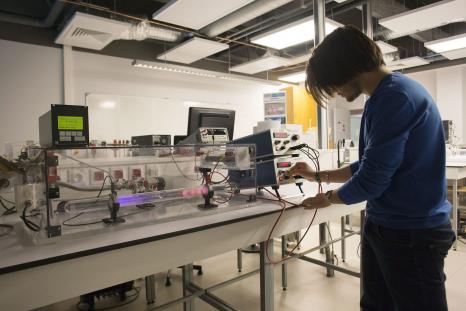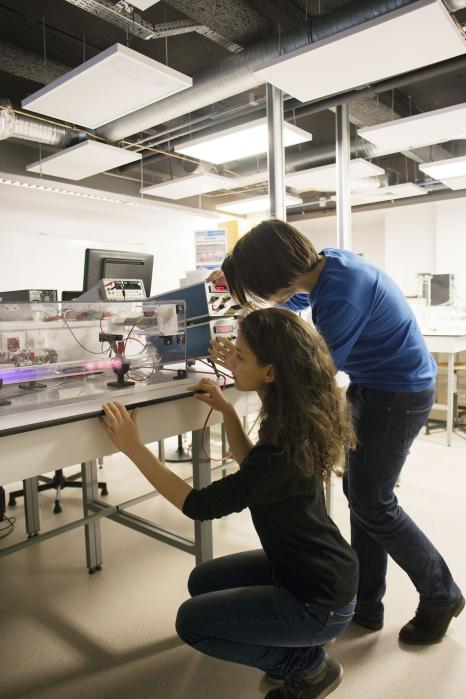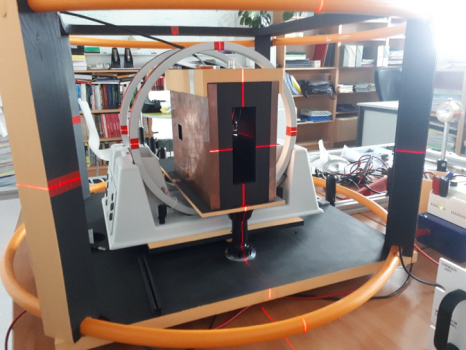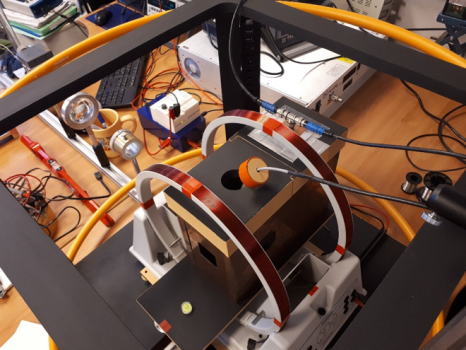
Hands-on experiments
New hands-on experiments have been developed by Dr Christophe Prigent (INSP) and taught to students at Bachelor and Master 1 levels:
-
“Plasma discharges - Langmuir probe” developed in 2017 in collaboration with the experimental platform of the Physics Faculty (Sorbonne Université)
-
“Hanle Effect" in 2019 with the support of PLAS@PAR.
NEW: From 2020/2021 hands-on experiments will be developed for remote access or even in virtual reality, in order to share plasmas more widely (to academic partners, in summer schools, etc.).
A glow discharge is a plasma (ie. a gas containing ions and free electrons thanks to an electric current). We focus here on discharge tubes commonly (and improperly) called "neon". These glass tubes are filled with air at very low pressure. By plugging a high-voltage supply to the metal electrodes of the tube, we create a very high electrical potential (around a few hundred volts DC). From a "disruptive" value, a breakdown can be observed: the gas becomes conductive and releases a large number of electrons. Then, a plasma appears between the electrodes.
Objectives:
-
Students have to quantitatively measure the breakdown voltage of a tube under a given residual gas pressure; Then, they are able to verify the Paschen law.
-
Students qualitatively study the light emitted by the plasma discharge (by image analysis) and highlight that inelastic electron/ion collisions are the source of this light emission.
-
Students measure the floating potential within the plasma and highlight the inhomogeneity of the electric field inside discharge (screening effects).
-
The Langmuir probe allows them to measure the temperature and density of electrons in the plasma.
-
A spectroscopic study helps to identify more precisely the ions and their excited states formed in the glow discharge and to estimate the collisional temperature of the cold plasma.
PLAS@PAR’s instructors:
- Julien Aublin (Sorbonne Université - LPNHE)
- Sylvain Beaumont (Sorbonne Université - LPNHE)
- Carine Briand (Paris Observatory - LESIA)
- Louis d’Eramo (Sorbonne Université - LPNHE)
- Gaëtan Gautier (Sorbonne Université - LPP)
- Mathieu Guigue (Sorbonne Université - LPNHE)
- Christophe Prigent (Sorbonne Université - INSP)
The Hanle effect is the modification of polarization of scattered radiation in the presence of magnetic field. Most fusion relevant high temperature plasma devices, such as Tokamaks, operate at high magnetic field. Hence, a typical magnetic diagnostic developed for these plasmas (Zeeman effect, Faraday rotation, etc.) measures high magnetic field (above 1 kG). In contrast, the Hanle effect allows to measure low magnetic fields (< 10 G) and is widely used to measure the magnetic field in the solar corona.
Objectives:
-
Students have to quantitatively measure the degree of polarization of scattered light as a function of the magnitude of the magnetic field.
-
Different configurations (with linear or circular polarized light) can be performed to measure the lifetime of the atomic excited states.
-
The experiment can be upgraded with a radio-frequency field to realize double resonance experiments (Brossel experiments, the historical experiments of nuclear magnetic resonance and optical pumping at the beginning of the laser development).




